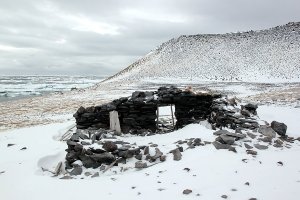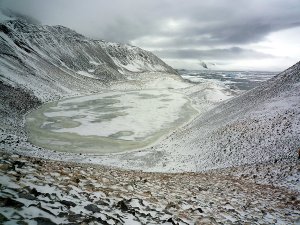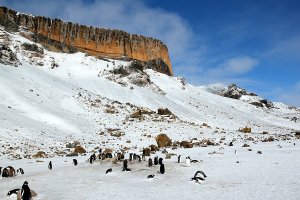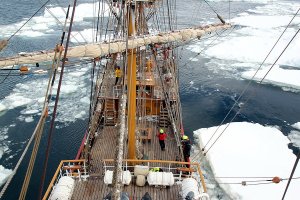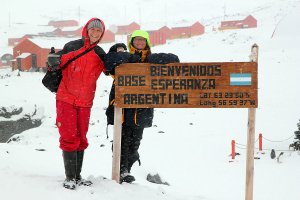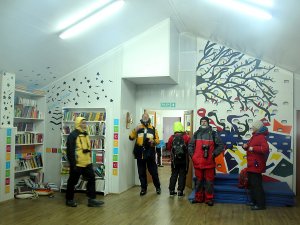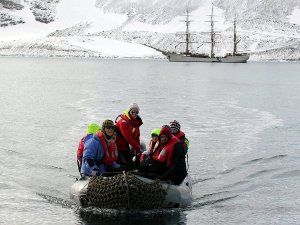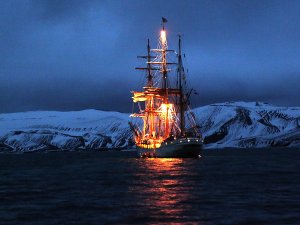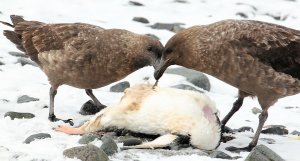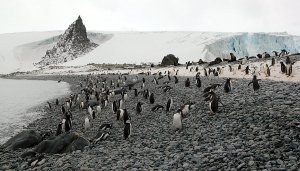Arto's Blog
Pages: << 1 2 3 4 5 ...6 ...7 8 9 10 11 12 ... 30 >>
The end of the Antarctic summer
Posted: 2015-08-03 00:41:00, Categories: Travel, Argentina, Antarctica, Sailing, 673 words (permalink)We would have loved to stay longer, but the sunny landing at Brown Bluff was a wonderful goodbye to Antarctica. After lunch we raised the anchor and started first motoring and then sailing north-east towards South Georgia, a subantarctic island about 800 nautical miles away.
Sunny whale watching on the Weddell Sea
Posted: 2015-07-27 23:51:00, Categories: Travel, Antarctica, Sailing, 597 words (permalink)An Argentinian village on the Antarctic Peninsula
Posted: 2015-07-24 23:36:00, Categories: Travel, Argentina, Antarctica, Sailing, 638 words (permalink)Antarctic bathing
Posted: 2015-07-16 23:24:00, Categories: Travel, Antarctica, Sailing, 472 words (permalink)A luxurious way to finish a day of hiking is to enjoy a hot bath. That's what we did on Deception Island after walking around the volcanic landscapes near Telefon Bay and visiting the huge Chinstrap penguin colony at Baily Head in the afternoon.
We came back to the ship for dinner and a short briefing as usual before all landings, then picked up our towels and headed back out on the deck. The crew was busy transporting everybody to the land with the zodiacs. On the beach just next to the sea water, steam was rising from the dark volcanic sand.
We got our ride in the second group of two zodiacs and when we arrived the fastest ones were already digging a hole in the sand. Surprisingly fast a long narrow pool was ready and filling up with nice, hot bathing water. Clothes off, hop in!
We had heard that the bath might be anything between chilly 15 and burning hot 70 degrees celsius, but we were lucky and had about 40°C, perfect for relaxing the muscles. Our pool wasn't very deep so we had to roll around a bit to keep the temperature constant on all sides of our bodies, but everybody fitted in and it was warm enough.
A dip in the Antarctic ocean was naturally a part of the full experience. That was easy to do, just get up from the hot pool, walk a few meters and the icy sea water was right there ready to embrace anyone who dared. A quick swim and back to the thermal bath, bliss!
Glen wanted to document his Antarctic swim and handed out his camera to Eduardo. Into the icy water, back to the hot pool, happy and warm again. "Oh no, the photo is really bad, you look like a ghost. You'll have to do it again!" What wouldn't a man do for a good photo — switch the flash on and back to the sea. Another swim, relaxing in the hot pool, how's it now? "Oh no, also this photo is bad, you look like a ghost again! I guess you'll have to do it again..." There was a burst of laughter from everybody around Glen who still didn't get his photo. But no worries man, you have enough friends who witnessed that you did your swim, even two times! :-)
After an hour of bathing we got out of the pool and filled it again with sand to look like we had never been there. Getting dressed in the cold evening breeze was quite chilly, but after we had our clothes on it was better again. Back at the ship the warm deckhouse and hot chocolate were waiting for us.
Penguins, seals, lots of penguins
Posted: 2015-07-13 21:45:00, Categories: Travel, Antarctica, Sailing, 875 words (permalink)Before returning to the ship we still had time to visit the ruins of an old whaling station, consisting of slowly rusting big tanks which had been used to store whale oil and a group of more or less collapsed wooden houses. After that it was time for dinner and a special evening activity, which will be described in the next post.

Copyright Arto Teräs <ajt@iki.fi>, licensed under the Creative Commons Attribution-Share Alike 3.0 Unported License. (Unless otherwise mentioned in individual photos or other content.)
